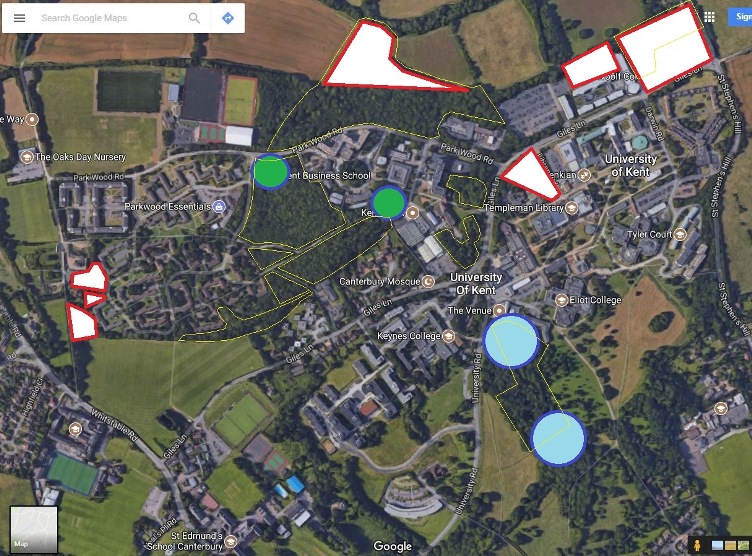© University of Kent - Contact | Feedback | Legal | FOI | Cookies
Areas of protection and/or high biodiversity sensitivity - Canterbury campus

Map key and guide
| Type | Description | |
|---|---|---|
 |
Ancient or semi-natural woodland | These woodlands are protected by law. If maintenance work is taking place in or near these woodlands please see https://www.gov.uk/guidance/ancient-woodland-and-veteran-trees-protection-surveys-licences for guidance. |
 |
Pond affected by Chytrid fungus | These ponds are known or thought to be infected by the Chytrid fungus which is highly transferable and devastating to aquatic life. To avoid spreading the fungus to other areas of campus, biosecurity measures should be adopted when working in these areas and vehicle tyres and shoes cleaned immediately after leaving the area. |
 |
Pond inhabited by great crested newts | Great crested newts are protected under the Wildlife and Countryside Act and depending on the time of year there may be significant restrictions in place. Some works may require an ecologist to be present. Even very minor or reactive works may require some mitigation measures. |
 |
Tree protection orders | These areas are covered by historical tree protection orders. Any work including ground works, significant vehicle movements, locating compounds or that result in significant noise or dust must be undertaken sensitively. |
Contact
For more information and/or advice about work in affected areas, please contact a member of the sustainability or grounds maintenance teams.
Catherine Morris - Environmental Adviser
- T: 07824 513549
- E: c.morris@kent.ac.uk
Emily Mason - Environmental Sustainability Assistant
- T: 01227 827119
- E: e.mason-552@kent.ac.uk
Paul Griffiths - Grounds Maintenance Manager
- T: 07872 990036
- E: p.s.griffiths@kent.ac.uk